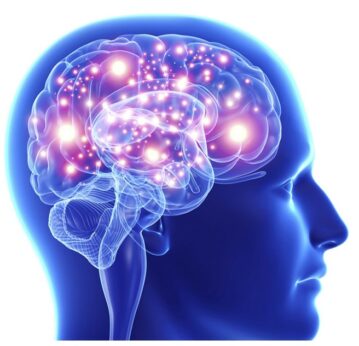A rose is a rose is a rose…
True enough. But the many types of roses that exist deserve differentiation as unique and distinct phenomena. The same is true of acquired brain injury. The term is a general one that encompasses a wide array of disorders that have as many differences as similarities.
 Brain Injury Overview
Brain Injury Overview
Acquired brain injury results from damage or disruption to the central nervous system. Some injuries stem from disturbances inside the body, such as when a clot blocks blood flow to the brain or when an infection attacks brain tissue. In other cases, brain injury results from an external force, such as when a person lands on a hard surface after tumbling off a roof or crashes into the windshield in a high-speed car accident.
In still other situations, a penetrating injury from a bullet or stab wound causes damage to the brain. And in still other cases, brain injury results from an incident that prevents oxygen from getting to the brain, such as when a person experiences a near-drowning episode or cardiac arrest. Each of these causes triggers a unique constellation of symptoms and aftereffects that make every acquired brain injury distinctive. As you will often hear QLI clinicians say, “If you’ve seen one brain injury, you’ve seen one brain injury.”
Brain injuries differ in severity as well as the cause. About 85% of brain injuries are mild in nature and are referred to as concussions. Effects of concussions usually resolve within a few days or weeks without any specific intervention other than rest when symptoms exacerbate. Only about 5% of people with concussions experience lasting symptoms that interfere with the resumption of normal activities. Identifying up front who will and will not have persistent problems is not possible, however, so all people sustaining a concussion should monitor symptom progression and take precautionary behaviors to maximize recovery.
Finding the Right Care After Brain Injury
QLI specializes in providing brain injury rehabilitation services to only a small proportion of the many thousands of people who experience a brain injury each year. With referrals coming in from across the United States, the admissions team carefully considers each person’s case. By examining factors such as the type of injury sustained, a person’s potential for recovery, and the family support available, the team endeavors to determine who will benefit the most from receiving the specialized care available at QLI. A constant question is whether treatment at QLI is likely to improve a person’s independence and quality of life. With only a limited number of spaces available, QLI must be selective in choosing who comes to the rehabilitation campus.
Most people who come to QLI following an acquired brain injury are at the severe end of the severity spectrum. They are people who have already received acute rehabilitation in a hospital setting but who can benefit from additional intensive services. Oftentimes, the only option would be living the remainder of their life in a long-term care facility if rehabilitation at QLI were not available. By providing additional inpatient treatment in physical therapy, occupational therapy, speech-language therapy, life path services, and counseling, people have the opportunity to continue the recovery process and return to living in a community setting. In 2021, QLI’s staff was proud to have succeeded in returning 119 of 133 people to their homes.
The Road Ahead
The journey to recovery following brain injury does not end with QLI even when a person returns home after treatment. Unlike other medical problems, brain injury is not cured when a person leaves the hospital or finishes inpatient treatment. Instead, acquired brain injury is a chronic condition that often has lasting effects. An instant of unexpected tragedy can have a sudden and dramatic effect on a person’s life trajectory. Additional rehabilitation through outpatient or telehealth services is a frequent recommendation, but even with more treatment, adjustment to an altered life path may continue for years.
Brain injury occurs as a sudden and tragic event. The changes that ensue are not desired or planned, and they continue to reassert themselves as unexpected hurdles to be faced over time. This is not always a bad thing, however. A person can have a full and satisfying life after brain injury, even when that life no longer resembles the one previously anticipated. The trick is recognizing that more than one path can lead to satisfaction and happiness.
So, the next time you walk through a rose garden, consider the pathway that brought you to that particular place at that particular time. And also consider the possibility that perhaps a rose is not always a rose after all. Sometimes it turns out to be a lily—a beautiful lily that is alive and dignified and worthy of respect for its survival in an ever-changing world.
Categories: Brain Injury, Neuroplasticity

 Brain Injury Overview
Brain Injury Overview